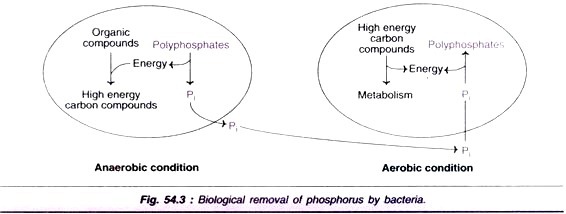The following points highlight the two main levels of metabolic pathways for intermediary metabolism. The levels are: 1. Intermediary Metabolism at the Tissue and Organ Level 2. Intermediary Metabolism at the Subcellular Level.
Level # 1. Intermediary Metabolism at the Tissue and Organ Level:
a. Amino acids formed from the digestion of dietary protein and glucose formed from the digestion of carbohydrate follow the common path of absorption via the hepatic portal vein. Both these metabolites and other-soluble products of digestion are initially directed to the liver (Fig. 21.5).
b. The liver primarily regulates the blood concentration of particularly glucose and amino acids.
c. The liver takes up excess glucose and converts it to glycogen (glycogenesis) or to fat (lipogenesis). During meals, it causes glycogenolysis to supply glucose in the blood or in company with the kidney, it converts non-carbohydrate metabolites such as lactate, glycerol and amino acids to glucose (gluconeogenesis).
d. Sufficient concentration of blood glucose is maintained by certain tissues in which it is fuel, e.g., brain and erythrocytes.
e. The liver also synthesizes the major plasma proteins (e.g., albumin) and deaminates amino acids with the formation of which is transported via blood to the kidney and excreted.
f. Skeletal muscle uses glucose as a fuel forming lactate and carbon dioxide. It stores glycogen for its use in muscular contraction and synthesizes muscle protein from plasma amino acids. During dietary shortage of protein, it can supply plasma amino acids from its stores of protein.
g. Lipids being digested form monoacylglycerols and fatty acids. These are recombined in the intestinal cells with protein and secreted into the lymphatic system and then into the circulation as a lipoprotein known as chylomicron.
h. Chylomicron triacylglycerol is not taken up by the liver and it is metabolized by extra-hepatic tissue having the enzyme lipoprotein lipase which hydrolyzes the triacylglycerol releasing fatty acids that are incorporated into tissue lipids or oxidized as fuel.
i. The long-chain fatty acid is synthesized (lipogenesis) from carbohydrate mainly in adipose tissue and the liver.
j. Adipose tissue triacylglycerol is hydrolyzed (lipolysis) to fatty acids which are released in the circulation.
k. Free fatty acids are taken up by most tissues (but not brain or erythrocytes) and esterified to acylglycerols or oxidized to carbon dioxide.
l. The liver performs two additional important functions:
(i) Surplus triacylglycerol from both lipogenesis and free fatty acids is secreted into the circulation as very low density lipoprotein (VLDL). This triacylglycerol faces the fate similar to that of chylomicrons.
(ii) Partial oxidation of free fatty acids leads to ketone body formation (ketogenesis). These ketone bodies are transported to extra-hepatic tissues where they become the major fuel source.
Level # 2.Intermediary Metabolism at the Subcellular Level:
a. Mitochondrion acts as the focus and crossroad of carbohydrate, lipid, and amino acid metabolism. Particularly, it is the house of the enzyme of citric acid cycle, of the respiratory chain and ATP synthase, of β-oxidation of fatty acids, and ketone body production.
It is also the collecting chamber for the carbon skeletons of amino acids after transamination and for utilizing these skeletons for the synthesis of nonessential amino acids.
b. In the cytosol; glycolysis, HMP shunt or the pentose phosphate pathway and fatty acid synthesis all take place. Substances such as lactate and pyruvate that are formed in cytosol must enter the mitochondrion and form oxaloacetate before conversion to glucose in the process of gluconeogenesis.
c. The membranes of the endoplasmic reticulum contain the enzyme system for acyl-glycerol synthesis and the ribosomes are responsible for protein synthesis.
d. The transport of metabolites of varying size, charge and solubility, through the membranes separating organelles involves complex mechanisms.


